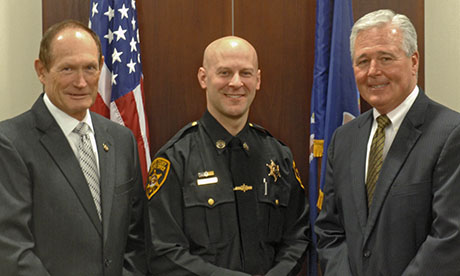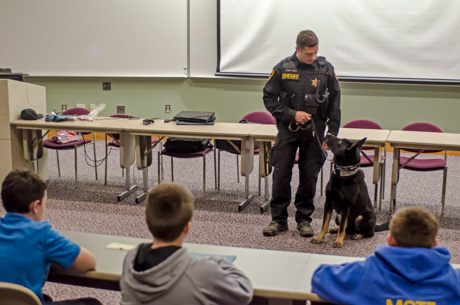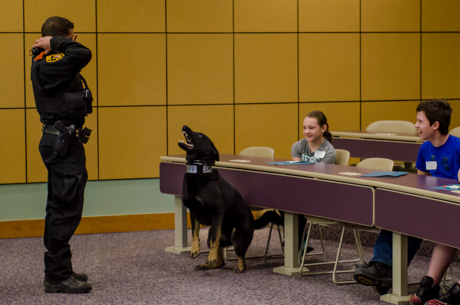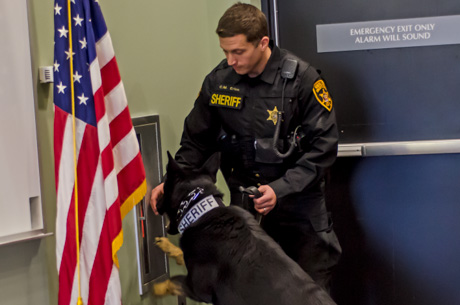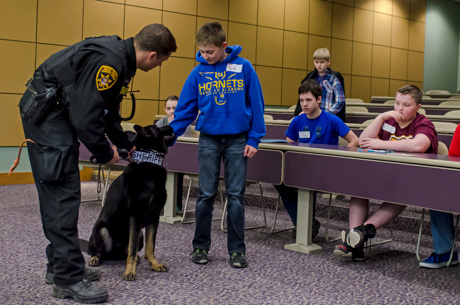A $10.8 million upgrade to the county's emergency radio system is expected to greatly improve the reliability and efficiency of emergency communication, but the unintended consequence is that citizens, off-duty first responders and the media could all be in the dark for months or longer once the new system is fully operational.
It's a bit of a surprise to everybody involved, but the new technology being installed by Rochester-based Harris RF is incompatible with even the most advanced consumer scanners currently on the market.
And when new scanners are released -- perhaps as early as the first part of the year -- they are likely to cost as much as $500 to $600 each.
Sheriff Gary Maha is a big believer in the idea that citizens with scanners help solve crimes. Clearly, when he spoke with The Batavian in the spring about the new radio system, he didn't anticipate the new technology would be incompatible with existing digital/trunking scanners.
"We're few and far between out there," Maha said. "We need all the eyes we can possibly have. If we have a bank robbery, we put that information out over the air so some citizen down the road may see the vehicle we want and can call 9-1-1. It's a benefit to us to have the people out there watching. They're our eyes and ears out there."
In recent weeks, we've had discussions with Maha about the situation and he said he's interested in finding a solution.
Getting scanners into the hands of media outlets is one thing. One solution that's been used in other parts of the country is for local law enforcement to lease emergency radios, with the outgoing transmission capability disabled, to news outlets. These radios cost in the neighborhood of $4,000 each, so it's still an expensive solution.
Another solution is putting streaming feeds of emergency transmissions from the P25 system on the county's Web site. But it's unclear at this point if the county has the available bandwidth or necessary technology to make this happen.
A Web-based solution would help both media outlets and make transmissions available to all county residents who care to tune in.
The Sheriff along with Undersheriff William Sheron met yesterday with executives at Harris.
Sheron said that Harris indicated it's a problem beyond the scope of their work, but said they are aware of other jurisdictions doing exactly what the Sheriff is considering.
"We're certainly aware of the issue and are interested in finding a solution," Sheron said.
Genesee County isn't the only jurisdiction facing this issue, as more and more agencies switch to the new technology and RadioReference.com's forums are filled with discussions about the situation.
What The Batavian has been able to piece together from the forum posts as well as interviewing Gerry Oliver, owner of G&G Communications in Le Roy, is that:
-
A company called GRE America made a radio that was designed to be compatible with Phase II technology, but the company went out of business. Its radio was imperfect technology and needed improvements and wouldn't necessarily work with Harris RF communication systems. BRS Phase II TDMA radios can be found on Ebay, but you take your chances buying one.
-
A company, The Whistler Group, Inc., has acquired GRE's intellectual property and is planning to enter into the scanner business. It didn't specifically announce a Phase II scanner, but presumably they'll bring one to market, perhaps before the end of March.
-
Representatives from Uniden have dropped hints in Radio Reference that the company -- which is the largest manufacturer of scanners -- is close to announcing a Phase II scanner. Estimates of when it will go to market range from fiscal Q1 2014 through the end of 2014.
-
Oliver believes that even after the switch-over, fire dispatch will remain on channel 4612, which means scanners currently programmed to pick up that channel will still be able to hear the fire dispatcher. There just won't be any chatter from emergency responders in the field answering the calls for people still listening on old scanners.
Radio Reference is an organization of ham radio operators and scanner enthusiasts. Through RF, volunteers from around the nation make their local emergency communications available on the radioreference.com Web site. Every smartphone app that allows people to listen to police and fire calls on their iPhones and Droids uses RR feeds, so if RR doesn't have working Phase II scanners, then those apps won't work for P25 jurisdictions.
Harris officials would not comment for this story.
The county has until March 1 to stop using one of its current 800 mhz channel so that the bandwidth becomes available for an inter-operable communication channel for federal Homeland Security.
Steven Sharpe, director of emergency communication, said installation begins next month, but current scanners will work on existing emergency channels until the P25 infrastructure is in place and operational.
Migration to the new system for emergency users should begin in December.
Beyond that the schedule of the transition depends on other factors -- from FCC licensing to tower crew availability -- though all equipment is scheduled to be installed by Feb. 1, giving the county one month to meet the 800 mhz channel deadline.
What happens at that point largely depends on what the county can make available to citizens and media for monitoring emergency transmissions, and what Whistler and Uniden make commercially available for purchase.
Oliver said there are a lot of people concerned about the issue, and people should be concerned.
"This is a public safety issue and it's a public information issue," Oliver said. "There's the average listener who pays taxes and thinks they have a right to listen in, but there's also the issue of firemen, off-duty police officers and EMTs -- how are they going to listen?
"I hope there's a solution for safety sake," he added. "Let's say I'm an (off duty) EMT and I live down the street from a call, a scanner might tell me, do I respond? What should I do if I hear nobody's responding? Those are the people who need scanners."
